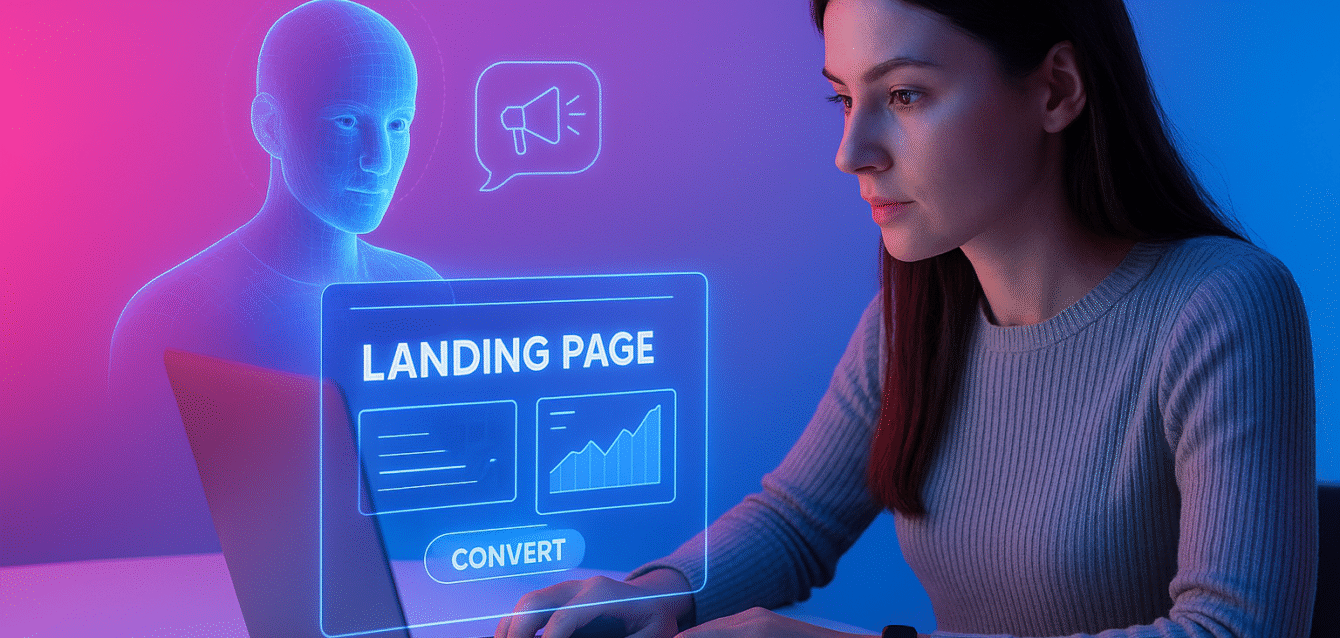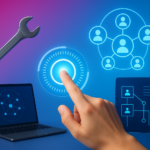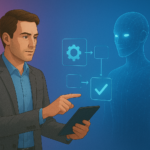The New Era of Landing Page Conversion
In today’s competitive digital landscape, your landing page is your most critical asset. It’s the moment of truth where a click becomes a conversion, and a prospect becomes a lead or a customer. For decades, optimizing these pages was a time-consuming process of manual A/B testing and guesswork. This is no longer the case. The future of conversion is here, and it’s powered by a new generation of AI agents for landing pages.
These intelligent systems are revolutionizing how marketers approach conversion rate optimization (CRO), using machine learning to analyze user behavior, predict performance, and autonomously test and deploy the most effective page elements. This transactional guide will provide you with a step-by-step process to leverage AI conversion optimization tools and transform your landing pages into high-performance conversion machines.
Step 1: The AI-Powered Landing Page Audit
Before you can optimize, you need to know what’s wrong. A traditional audit can take hours, but an AI agent can analyze a landing page in seconds, providing a comprehensive report of its strengths and weaknesses.
- Technical Health Check: An AI agent will quickly scan your page for technical issues that hurt conversions, such as slow loading times, broken links, or mobile-unfriendly layouts.
- Content and SEO Analysis: The agent can analyze your copy for readability, emotional tone, and keyword density. Using tools like SEOmator, you can get an instant audit of your on-page SEO health and see how your content stacks up against competitors.
- Predictive Performance Scoring: Based on its analysis of thousands of high-performing pages, the AI agent can give your landing page a predictive score, highlighting the specific elements (headline, call-to-action, hero image) that are likely to be underperforming.
Step 2: Automated A/B Testing and Hypothesis Generation
This is where AI agents for landing pages truly shine. They move beyond the limitations of manual A/B testing to generate and test hundreds of variations at scale.
- Hypothesis Generation: Instead of brainstorming ideas, you can have an AI agent generate a list of data-backed hypotheses. For example, it might suggest, “Testing a benefit-focused headline will outperform a feature-focused one for a specific audience segment.”
- Multivariate Testing at Scale: AI agents can run multivariate tests on multiple page elements simultaneously (headline, button color, image, etc.). They don’t just find the best-performing variation; they also discover the winning combination of elements.
- Dynamic Audience Segmentation: AI can automatically identify which visitors are most likely to convert and route them to the specific landing page variant that is performing best for their demographic, location, or referral source. This is a game-changer for conversion rates. As HubSpot notes, AI in CRO can create personalized experiences for different audience segments.
Step 3: Dynamic Content and Personalization
To achieve true AI conversion optimization, you need to deliver content that resonates with each individual visitor.
- Personalized Headlines: An AI agent can dynamically change the headline of your landing page based on the search query a visitor used to find it. For example, a search for “best email marketing software” could show a headline that highlights your software’s email features, while a search for “marketing automation tools” would show a headline focused on your automation capabilities.
- AI-Generated Copy: Some AI agents have built-in copywriting tools that can automatically generate persuasive copy for your landing page. You can provide the agent with a few key points about your product, and it will write multiple versions of the page, allowing you to test which one converts best.
- Smart CTAs: Your call-to-action (CTA) button is crucial. An AI agent can test different CTA phrases and button colors in real-time to determine which ones are most likely to drive action for different visitor types.
Step 4: Real-Time Optimization and Reporting
The job of an AI agent doesn’t end after the initial test. It continuously learns and optimizes your landing page in real-time.
- Continuous Learning: As more visitors interact with your landing page, the AI agent’s model becomes smarter, constantly refining its understanding of what works. It can automatically shift traffic toward the winning variant as soon as it has a statistically significant result, without waiting for the test to end.
- Proactive Reporting: AI agents provide clear, actionable insights into your landing page’s performance. Instead of a pile of raw data, you get a report that tells you exactly why a certain element is underperforming and what you should do about it.
- Seamless Integration: The best AI conversion optimization tools integrate directly with your existing marketing stack, from your CRM to your ad platforms. This allows for a seamless flow of data and ensures that your landing page optimizations are reflected across your entire marketing funnel.
Conclusion: From Guesswork to Guaranteed Results
The era of manually tweaking landing pages and waiting months for a result is over. By embracing a strategy powered by AI agents for landing pages, you can automate the most complex parts of the conversion funnel, run smarter and faster experiments, and deliver a personalized experience for every visitor. This shift is not just an efficiency boost; it’s a strategic move that will lead to a dramatic increase in your conversion rates and a significant improvement in your marketing ROI.
To learn how to take your AI strategy to the next level, read our comprehensive guide: Building AI Agents for Lead Generation.





